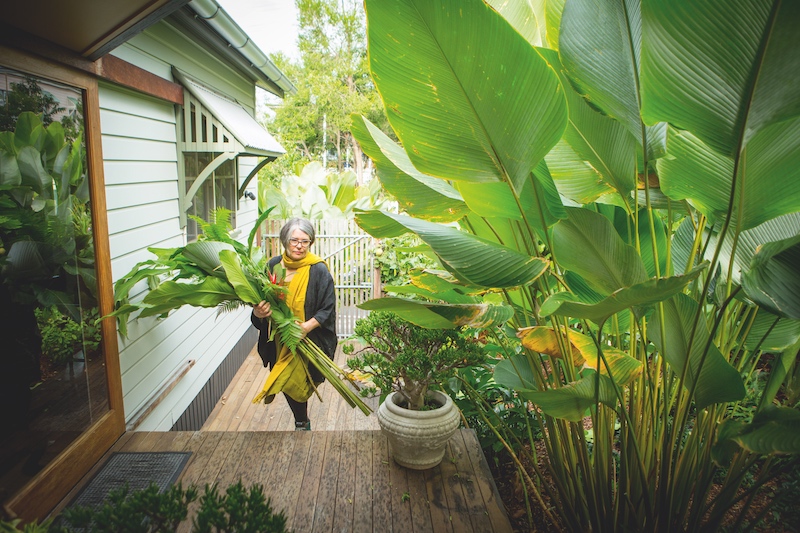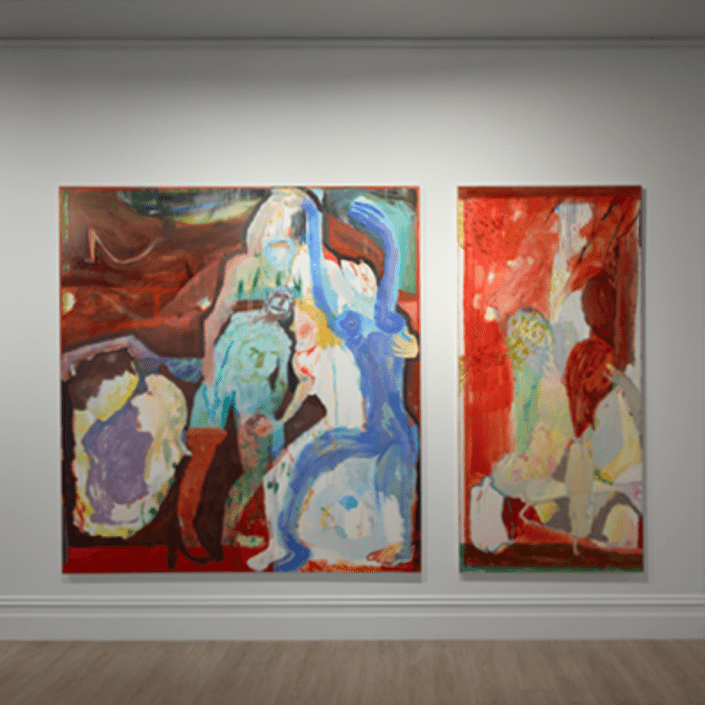Karen Black: Beautiful Tragedies
Karen Black talks to Prue Gibson about her recent trip to the Turkish/Syrian border where she worked with Syrian refugees – a trip that informs her latest work.
Words: Prue Gibson
Photography: Paul Harris
The work of Karen Black, who has been painting intensely since graduating from Griffith University Queensland College of Art in 2011, has always been steeped in political and social complexity, but bound by the will of her material. In 2013 she was painting stories of illegal immigrant women arriving by boat. More recent research was based on essays, publications and videos referencing the work of Syrian/American architect and writer Lina Sergie, who works as a humanitarian advocate for displaced children and women in war-torn places.
Black’s work is a research-led practice. She garners information and builds up the pathos and pain, as she concomitantly layers the painting surfaces. There is an apparent craquelure on the surface of some of her oil on wood paintings that reminds us of Goya’s black paintings on the walls of his home. Using tar, Goya’s dark surfaces quickly became decayed and cracked. Likewise, there is a Romantic horror in Black’s work, which hints at miseries and alienations outside middle class Australian habits. Always, though, there is a passion for materials. She says: “Paint feels beautiful. It’s like playing with ice cream. It lets me down in dramatic ways. It is better than me – it often makes its own decisions.” Alongside the painful pleasures of the Romantic sublime, there is also a Modernist whimsy to her painterly hand. Splotches of colour are the fragments of narrative disruption that were so particular to the early 20th century period of painting. Indeed she asserts her love for “Otto Dix, Max Beckman, Käthe Kollwitz … and of course I am always looking at the work of Goya, Joan Mitchell and Arshile Gorky.’
Unwieldy forms, seemingly un-composed, are united by colour and structural form that could best be described as well-aggregated. Figures float, yearn, lament, reign supreme and fall: they comprise the gambit of Black’s work. There are hidden stories that are difficult to track. There are complex formulations of conventional structure that are undermined and subverted with every stroke of her brush. She says: “I enjoy experimenting with paint and imagine while I am painting that I am making a three-dimensional work, revealing all sides of an object on a flat surface. There are so many dichotomies in painting. It has an important history that is inseparable from its materiality and acknowledges the changes in its own history with a brutal honesty. Painting has a special way of giving an idea form, it opens up a different kind of space.”
It comes as no surprise that lying by Black’s bedside is A Rúmí Anthology, poems and translations by the 13th-century Persian mystic, Jalálu ‘l-Dín Rúmí. She recently returned from a stint at the Turkish/Syrian border. There she worked with Syrian refugees under the umbrella of the Karam Foundation’s Zeitouna mission. Black says: “the mission was led by over 30 mentors travelling from around the world, serving over 350 Syrian students who are currently displaced along the Syrian/Turkish border. Seeing first hand the devastating impact of the war on the children and families of Syria is certain to have an impact on the new work I am making. It was great to connect with Lina Sergie on the mission, to be on the ground on the Syrian border and to hear stories first hand from children and translators of their experiences, to learn how this is affecting their everyday lives.”
Black’s new work is clearly informed by her research trip, her humanitarian work, her reading and her experience on the Turkish/Syrian border. This kind of extremity will have a substantial effect on her nascent and provocative work. Black says: “After spending time with the refugees on the Turkey/Syria border I saw how resourceful the people are with what little they have. In this new body of work I will be using up all of these [leftover] paints as a way of being sustainably responsible but also to challenge myself to work with new colours that may produce something more interesting than I had originally planned.”
There is an atmosphere of fear and despair in Black’s work, the direct result of her contact with people who are suffering in the face of a politics- gone-mad of war zones, where there is no honour and no relief for its innocent victims. Black’s worth as a painter is her ability to couch these threats in terms of beauty. Like the Islamic art from the Umayyads to the Ottomans she recently saw at the Istanbul Museum, her work seems to address current issues, but with the grace of an ancient thinker.
KAREN BLACK SHOWS AT SYDNEY CONTEMPORARY WITH SULLIVAN+STRUMPF, 10-13 SEPTEMBER 2015.
This article was originally published in Art Collector issue 73, JUL – SEP, 2015.











